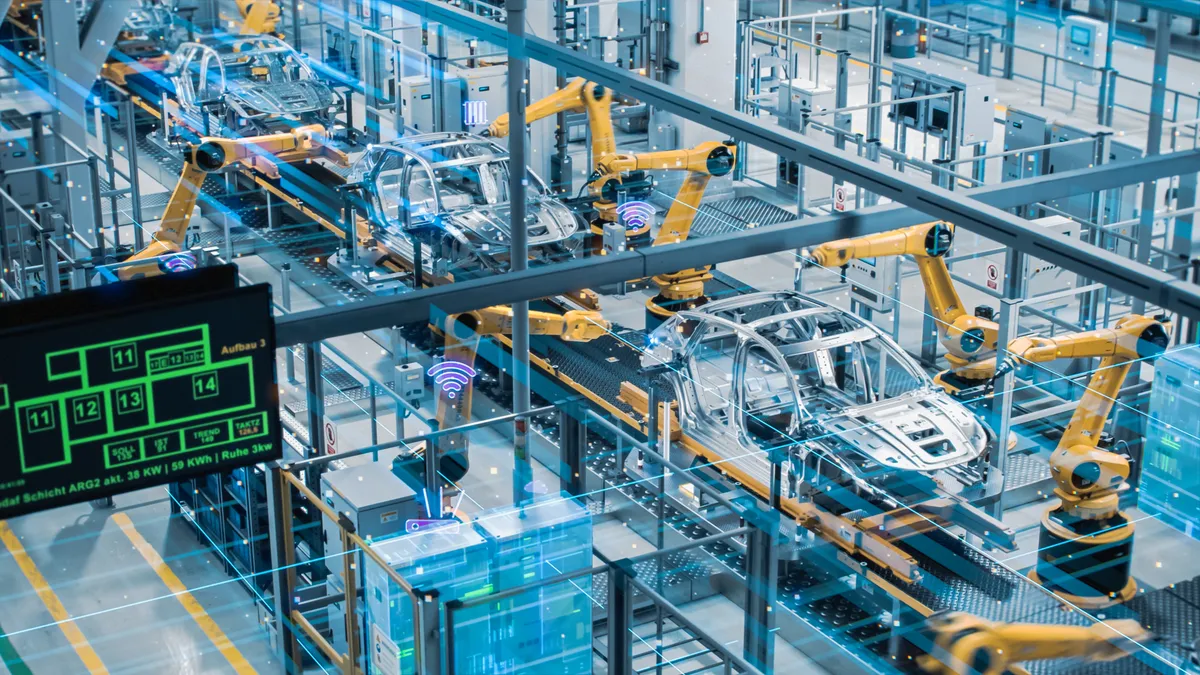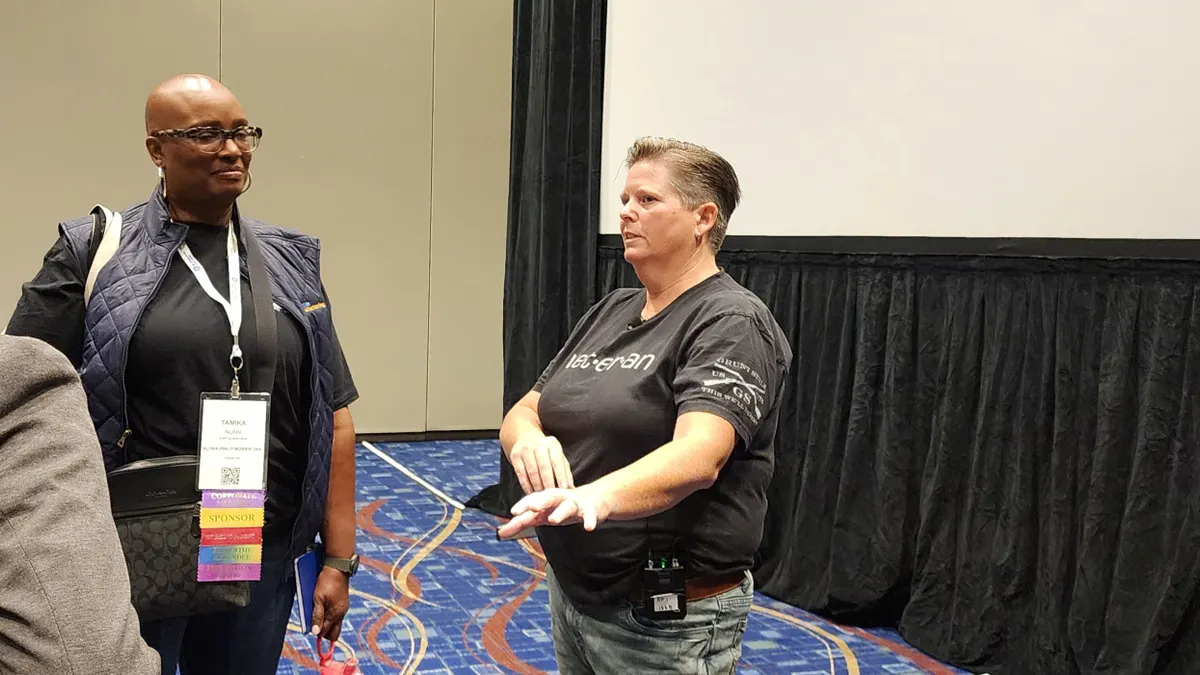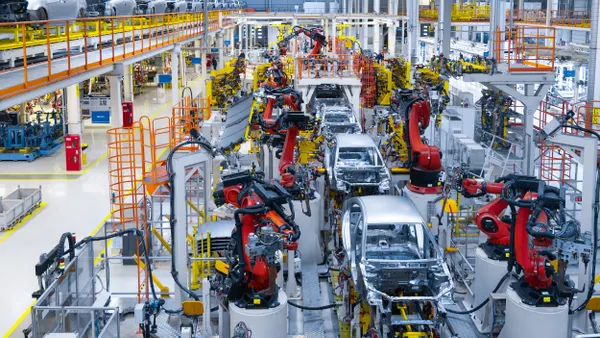Digital twin technology has accelerated massive productivity and efficiency gains in global manufacturing operations, helping improve product design and operational processes while reducing downtime and increasing efficiencies. Generative AI (GenAI) has the potential to augment and multiply the value of digital twins, opening up new possibilities in design, operations and production.
Where digital twins and GenAI converge
Digital transformation has revolutionized manufacturing. Investments continue to build, with 61% of executives partnering with specialized technology companies to deliver on smart manufacturing goals.
One emerging example is digital twin technology, which the Digital Twin Consortium defines as “virtual representations of real-world entities and processes, synchronized at a specified frequency and fidelity.”
Large-scale manufacturers use digital twins to improve design, test new processes and create new products. Adding GenAI capabilities is a logical next step and a way to turbo-charge results.
Willie Reed, a general manager of global industries for manufacturing & retail at Dell Technologies, indicates, “GenAI will use digital twin simulation data to help answer questions about how to improve quality and efficiency while reducing costs.”
Combining GenAI with digital twins could have significant financial impacts for large manufacturers. An automotive factory, for example, might use AI-powered assembly line digital twins to identify and eliminate bottlenecks in real time. This could easily result in a 15% reduction in production time and a 10% increase in output. For a $10B manufacturer, this could amount to $100 million in additional revenue and cost savings of $50 million annually.
A symbiotic relationship
Digital twins and GenAI have a lot in common. They are both hungry for data.
Todd Edmunds, global CTO for Manufacturing at Dell Technologies, explains the intersection as such: “Where many organizations are drowning in data, digital twins and GenAI need all the data they can get, and they can be trained to know what to do with it. Generative AI will help digital twins produce better outcomes, and digital twins will help us simulate, visualize and deliver them.”
Digital twin implementations use and generate real-world data to fulfill different roles for organizations, such as:
- Providing details about current status.
- Suggesting optimal actions.
- Simulating scenarios to explore potential outcomes.
GenAI can rapidly analyze data to provide insights, make predictions and suggest alternatives to be tested in a risk-free digital twin environment. It might then use new insights to apply improvements.
GenAI can potentially amp up digital twin capabilities and even unlock new use cases by helping manufacturers analyze and predict at speed and scale. As a feedback loop, it can also help iteratively improve processes and products.
A use case of digital twin in semiconductor manufacturing
Intel Corporation understands how to apply technology to optimize operations and increase factory output. They help plants use automation for material delivery, scheduling and production — so humans only need to handle the exceptions. Spending less time on physical processes leaves more time for strategy and innovation.
In a recent Digital Twin Consortium webinar, Paul Schneider, principal engineer at Intel, explains, “The focus shifts to how you can manage, analyze and use the six billion data points that come from each factory daily. We’re using simulation-based digital twin solutions to optimize operations and feed that data back into online systems to optimize output.”
Intel currently uses digital twins to solve problems like streamlining the movement of automated material handling systems. For example, a digital twin is applied to examine issues with overhead delivery vehicles by leveraging three distinct modes:
- Live mode helps identify machine failure or routing problems in real time.
- Playback mode helps technicians discover incident root causes and start designing solutions.
- Simulation mode allows testing of “what-if” scenarios to help predict and solve traffic issues.
Schneider expects GenAI to provide even more insight as it develops, noting, “Eventually, generative AI might compile and analyze simulation results, tweak inputs and feed that information back into our systems. It might autonomously optimize scheduling systems, keep materials where they need to be and continually maximize factory output.”
Considerations for integrating generative AI and digital twins
When it comes to generative AI and digital twins, don’t wait for the competition to pass you by. Act now to gain and maintain an edge by starting with a strategic investment in scalable technology to run these and other next-generation workloads. Here are some key considerations for successful adoption:
- Upgrade from legacy architecture: Transition from older systems to a modern architecture that can handle advanced workloads like AI and machine learning. This will prepare you for the demands of today and for future technologies.
- Scale with confidence: Embrace a flexible DevOps framework to manage today's applications and seamlessly integrate the applications of tomorrow. Adapt and scale effortlessly as new technologies emerge.
- Integrate smart, connected infrastructure in factories: Adapt your factory infrastructure to be smart and connected. This will support the integration of multiple smart manufacturing applications and solutions, enhancing efficiency and productivity.
- Digitize and modularize manufacturing: Enhance manufacturing with modular, flexible and digitized processes and infrastructure.
By integrating digital twin insights with GenAI analytics, manufacturers will be able to build, iterate and test continually — with each technology informing the other to enhance outputs. The combined transformative power of GenAI and digital twins has the potential to reduce factory costs, minimize downtime and improve innovation — making them essential components in future industrial manufacturing environments.
Check out this playbook to learn more about how generative AI and digital twins can accelerate innovation in manufacturing.










